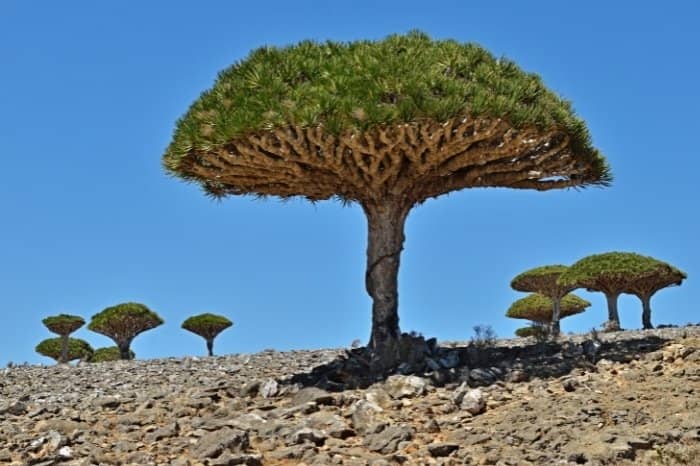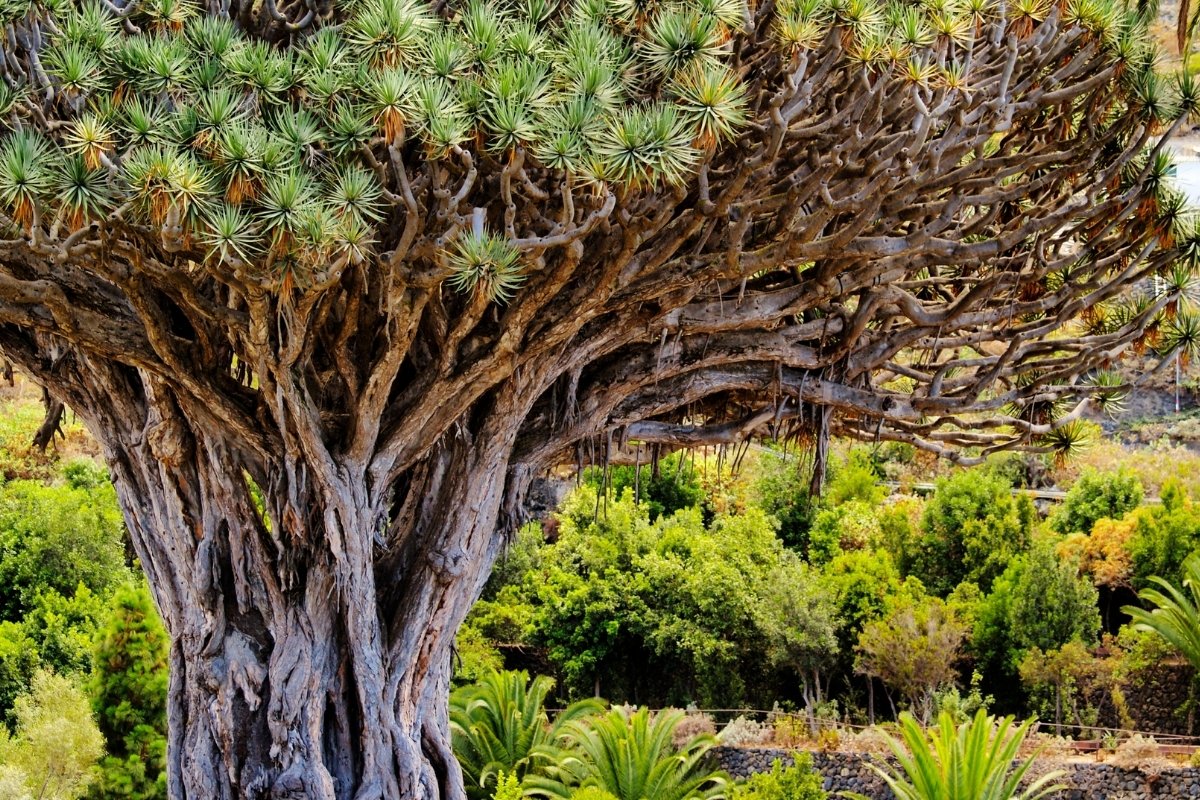Using the Best Soil for Dragon Tree is essential for this beautiful subtropical plant to thrive. Native to the Canary Islands, Western Morocco, Cape Werde, and Madiera, these trees are resilient and grow with little care. This makes them an excellent choice for anyone who enjoys houseplants but does not have much time to care for them.
It can take up to 10 years for this tree to grow to about 1m high. However, for it to reach its maximum potential, it could take up to 30 years. This exotic-looking plant makes a great addition to any interior. It is a beautiful evergreen tree with a smooth, slender trunk that thrives in the right conditions.
Its thick, glossy green leaves with pointed tips, look like the horns of a dragon, hence its name. They are also known as corn plants. Its gorgeous variegated leaves can tolerate different light conditions, however, excessive heat or sunlight is not recommended. Let’s learn more about these attractive evergreens below.
Dragon Tree Soil Type
Using the best soil for dragon tree is essential for it to grow to its full potential. These plants are amongst the most popular bonsai trees in Japan, growing best in sunny locations. They also produce beautiful flowers in the spring if properly maintained. Below we discuss the best soil type recommended for growing them.
Soil Recommendations – Best Soil For Dragon Tree
- Dragon trees like fertile soil and need plenty of water for successful growth.
- Use loamy soil amended with peat moss for water retention, aeration, and drainage.
- You should also add half a cup of crushed limestone gravel to help leach calcium and magnesium into your plant’s soil for optimal growth.
- Avoid wetting your dragon tree’s roots too often to prevent fungus, disease, and rot.
- Using very sandy soil is not recommended because it can get too dry too quickly.
- Dragon tree soil type should have good moisture management capabilities, be rich in nutrients, and be slightly acidic with a pH balance of 5.5 to 6.5.

Take Out Time to Also Read:
- Best Soil For Closed Terrariums – A Guide to Thriving Indoor Ecosystems
- Best Soil For Cat Grass – A Guide To Feline Plant Food And More
Repotting Dragon Tree
Dragon tree is one of the best tropical varieties to grow in your indoor plant collection. Many gardeners prefer to plant them in large containers rather than directly into the ground to prevent root rot and other complications.
This tree has a unique and unusual appearance with its stiff branches, large leathery leaves, and flowers that resemble red spikes. Using the best soil for dragon tree when newly planting them or repotting is vital.
Steps For Successful Results When Repotting Dragon Tree
Choose the correct-sized plant pot, bearing in mind that the tree will someday grow to its full potential.
Spring or summer would be the best time to repot.
Keep in mind that this is a slow-growing tree that can reach up to 20 ft tall in its native habitat.
These plants have sensitive roots so carefully take them out of their existing pot to avoid damage.
Gently wash the dirt off the roots and transfer them to their new pot using nutrient-rich soil with exceptional drainage.
A Dragon Tree requires plenty of sunlight to thrive. Artificial sunlight for 2 to 3 hours a day will suffice.
However, if you live in a region with very hot climates, then they should not be exposed to heat for more than six hours a day.
After repotting, it is best to keep them in low-light spots to help them adapt to their new environment.
How To Take Care Of A Dragon Tree
For best results, it is recommended that you use the best soil for dragon tree. Knowing how to take care of your plant will benefit you as these stunning evergreens shed an aura of beauty wherever they are placed. Here are a few care tips that your should implement when growing these gorgeous trees.
Dragon Tree Plant Care – Best Soil For Dragon Tree
- Water and fertilize your plant regularly for it to stay healthy.
- When choosing the location to plant, find one with plenty of light but not direct sunlight. Too much sunlight will cause damage to the foliage.
- For indoors, growing it in the bathroom or kitchen is ideal as this tree enjoys the humidity levels in these spaces.
- Look for signs and symptoms in your plant as wilted leaves, scorching, and root rot will be evident in the color and growth of your tree. If you notice any of this, move it to another spot or repot your tree.
- Keep in mind that these plants do not take likely to be moved around too often. This is because they take time to adjust to a new environment.
- They should never be watered until the top inch or so of the soil has dried out completely, as too much water will cause the plant to rot from the bottom up.
- They like high humidity, so misting them daily will keep them healthy.
How Big Does A Dragon Tree Get
The medium-sized dragon tree has narrow leaves that resemble those of corn, which is where the name corn plant originated from. A little-known fact about this plant is that it can grow to over a couple of feet in height with proper care. Seeing that they can reach different heights when grown in certain environments, choosing the one that is best for your home can be a tad bit confusing.
When planted in the best soil, these plants can grow quite large, taking up a lot of room. If you’re worried about your space or have a small terrarium for it to grow in, rather choose a smaller variety instead. You can also choose to keep it in a pot outside. Although they’re quite hardy, using the recommended soil will benefit your plant.
Boon Bonsai Soil Mix”Boon Mix” – Inorganic Substrate with Pumice, Lava and Akadama
The dragon tree is a tropical plant that has a single trunk that can reach up to 10 feet tall. They typically take three years to grow after transplanting, so it may be best to start with an already-established specimen if you want yours to grow quicker.
Conclusion – Best Soil For Dragon Tree
As mentioned above, the best soil for dragon tree is well-draining loamy soil with a slightly lower pH. This exotic plant can beautify any home or garden as it is eye-catching. Although they take a little longer to grow compared to other houseplants, it is well worth the wait.
Ensure that they are planted in loose, well-drained, aerated soil for strong root development. It must also be fertilized with phosphorus and nitrogen, as well as potassium to increase its growth rate. Also, remember that misting them daily will keep them thriving.
This tree does not easily adjust to being moved around, so decide properly where you want to place your plant. It must have a sunny or partially shaded area so it can absorb enough light to provide energy for producing chlorophyll.


